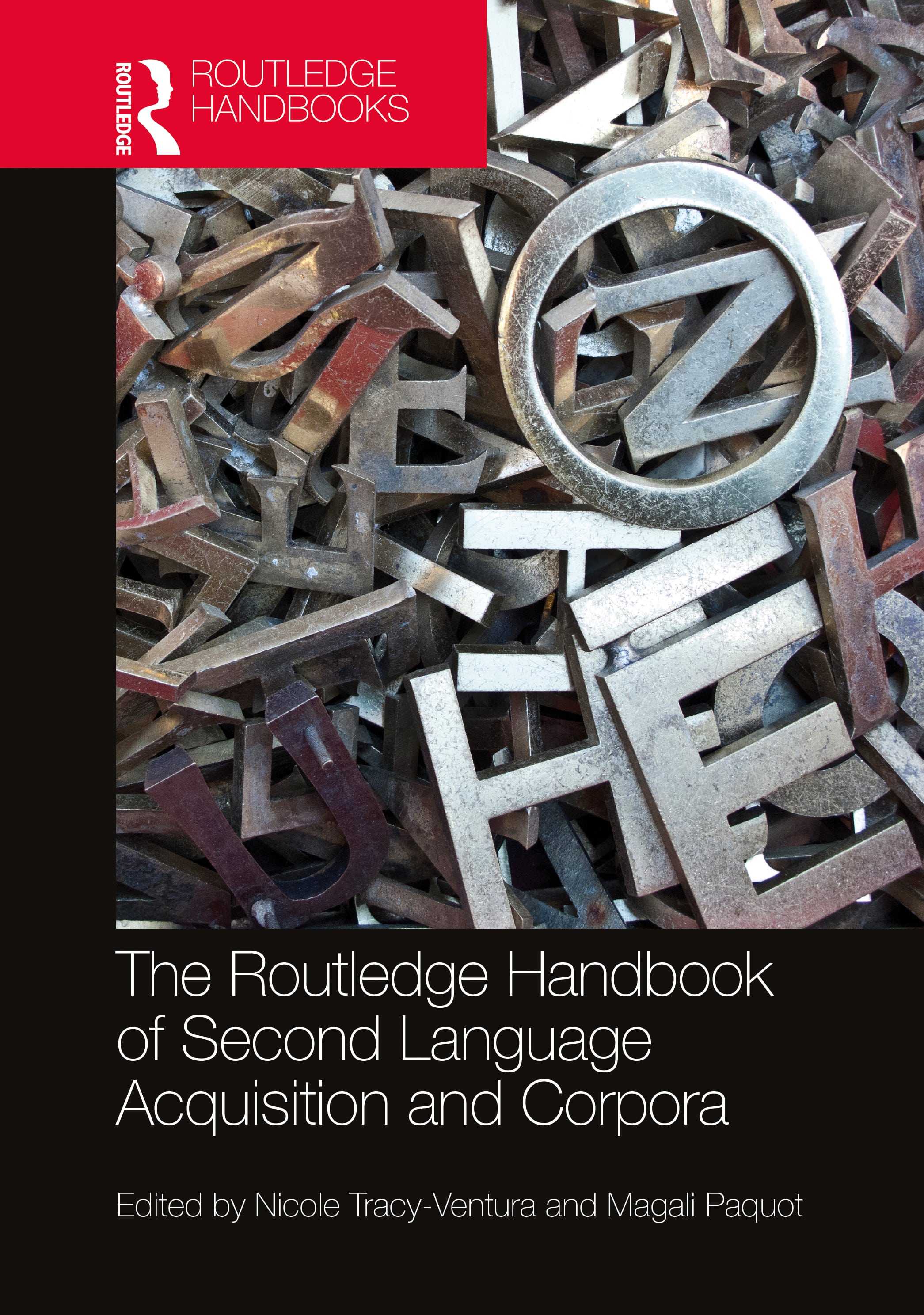 Cristóbal Lozano, “Generative Approaches”, in N. Tracy-Ventura & M. Paquot (Eds.), The Routledge Handbook of Second Language Acquisition and Corpora (Routledge, 2021), pp. 213-227. |
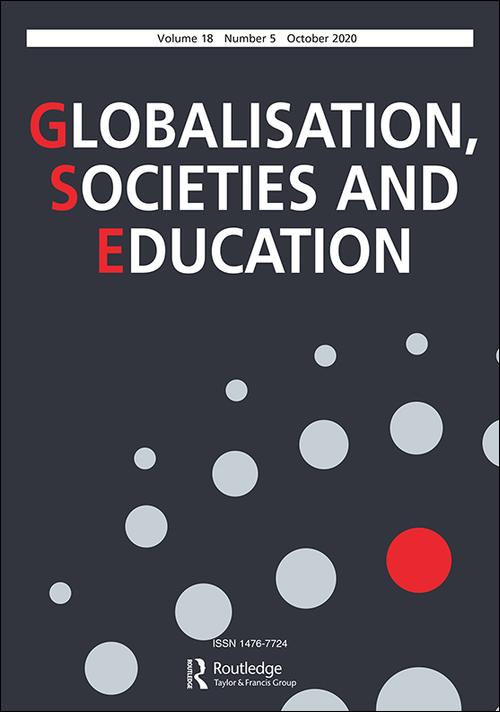 Encarnación Hidalgo Tenorio, “Trump’s Populist Discourse and Affective Politics, or on How to Move ‘the People’ through Emotion”, Globalisation, Societies and Education, (2021): 1-24. |
 Pilar Villar Argáiz, “Eavan Boland’s Poetry: The Inoperative Community”, in R. Bradford, M. Gonzalez, S. Butler, J. Ward and K. Ornellas (Eds.), The Wiley Blackwell Encyclopedia of Contemporary British and Irish Literature. Volume 1 (John Wiley & Sons, Ltd., 2020), pp. 127-137. |
 Rocío Montoro, “The Novel of the Future: Author's Manipulation in Henry Green's Nothing (1950) and Doting (1952)”, in S. Sorlin (Ed.), Stylistic Manipulation of the Reader in Contemporary Fiction (Bloomsbury, 2020), pp. 70-91. Rocío Montoro, “The Novel of the Future: Author's Manipulation in Henry Green's Nothing (1950) and Doting (1952)”, in S. Sorlin (Ed.), Stylistic Manipulation of the Reader in Contemporary Fiction (Bloomsbury, 2020), pp. 70-91.
|
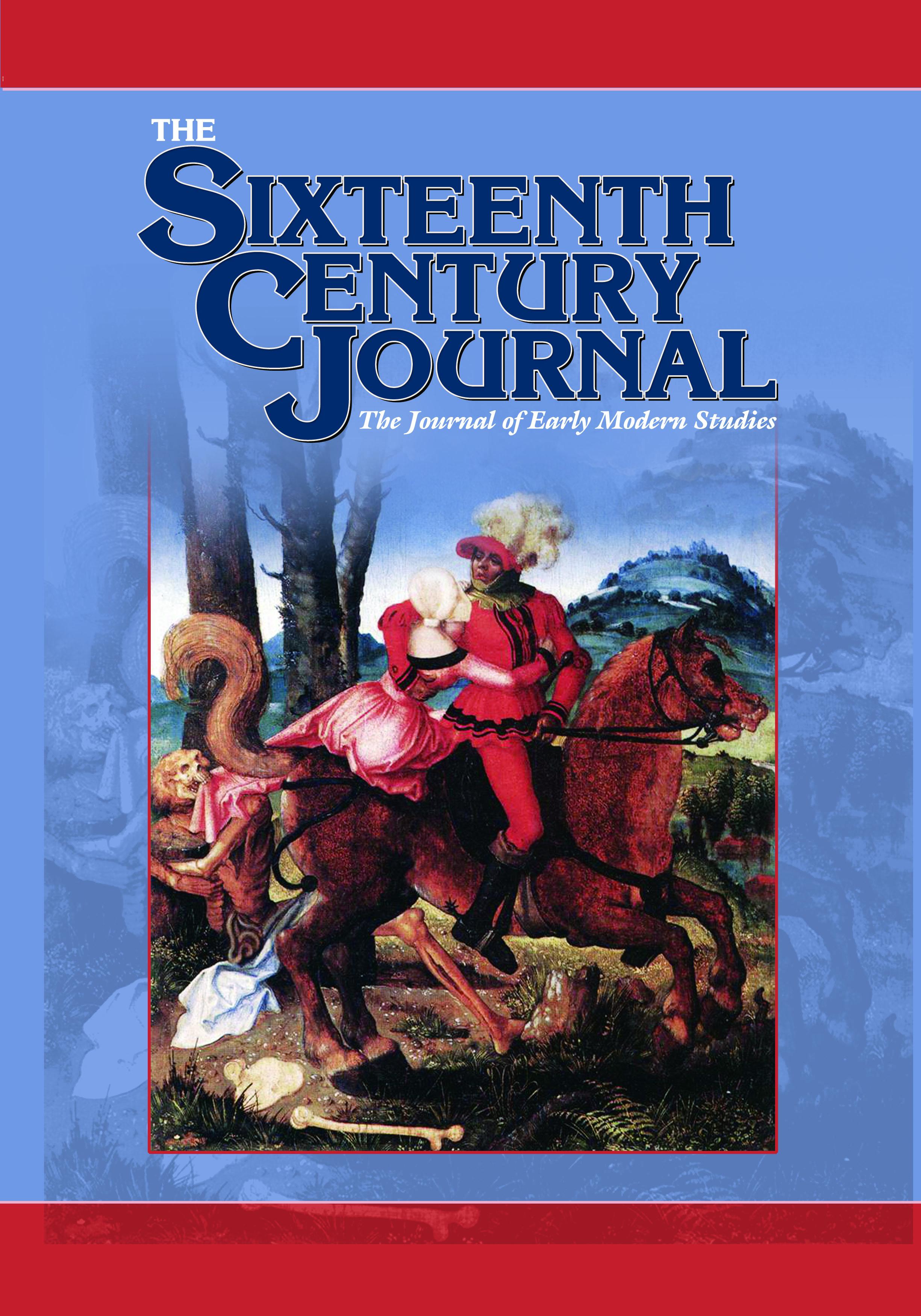 Rocío G. Sumillera,“Political Medicine in Early Modern Spain, or How Physicians Counsel the King”, Sixteenth Century Journal, 51.2 (2020): 419-443.
|
 Karin Vilar Sánchez, “Lexical Contact Phenomena among Spanish Migrants in Cologne”, in Andrew Lynch (Ed.), The Routledge Handbook of Spanish in the Global City (Routledge, 2020), pp. 387-405. Karin Vilar Sánchez, “Lexical Contact Phenomena among Spanish Migrants in Cologne”, in Andrew Lynch (Ed.), The Routledge Handbook of Spanish in the Global City (Routledge, 2020), pp. 387-405.
|
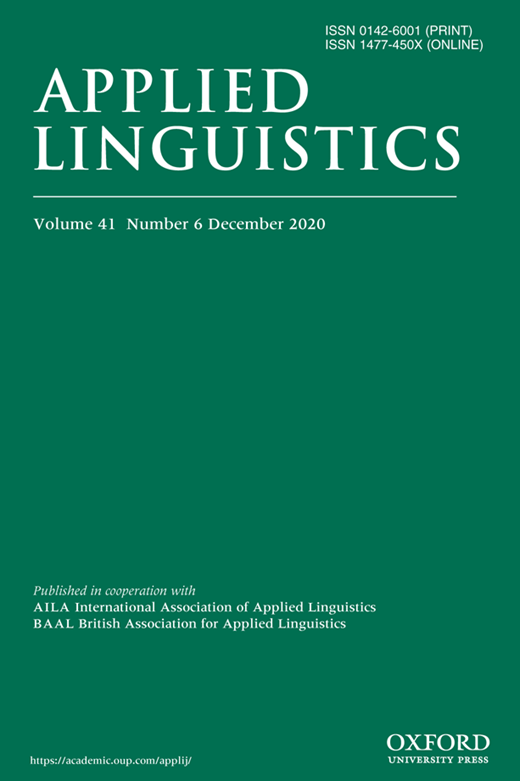 Encarnación Hidalgo Tenorio & Miguel Ángel Benítez Castro, “The Language of Evaluation in the Narratives by the Magdalene Laundries Survivors: The Discourse of Female Victimhood”, Applied Linguistics, 42.2 (2020): 1-28. |
 Karin Vilar Sánchez, “‘It Makes me Feel Smaller and at other Times it Gives me a Rush.’ Experienced Recognition in Situations of Migration and Willingness to Acquire a Foreign Communication Style”, in Simons and Smits (Eds.), Language Education and Emotions (Routledge, 2020), pp. 76-93. |
Paula Camacho, “Una visión de género del Londres literario de los años 20: el empoderamiento de la mujer a través de la escritura sobre cine”, in Eva María Moreno Lago (Ed.), Pioneras, escritoras y creadoras del siglo XX (España: Ediciones Universidad de Salamanca, 2019), pp. 361-379. |
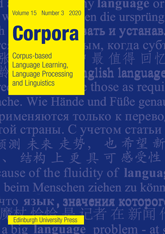 Rocío Montoro and Dan McIntyre, “Subordination as a Potential Marker of Complexity in Serious and Popular Fiction: a Corpus Stylistic Approach to the Testing of Literary Critical Claims”, Corpora, 14.3 (2019): 275-299. |
|
|
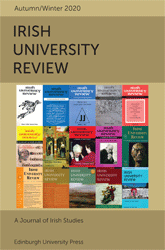 Pilar Villar Argáiz, “Secrecy, Alterity and Defiant Femininity in Eiléan Ní Chuilleanáin’s The Boys of Bluehill”, Irish University Review: A Journal of Irish Studies, 49.2 (2019): 370-389. |
 Rocío Montoro, “Investigating Syntactic Simplicity in Popular Fiction: A Corpus Stylistics Approach”, in R. Page, B. Busse and N. Nørgaard (Eds.), Rethinking Language, Text and Context. Interdisciplinary Research in Stylistics in Honour of Michael Toolan (Routledge, 2019), pp. 60-75. |
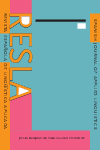 Cristóbal Lozano, “Using Learner Corpus Methods in L2 Acquisition Research: The Morpheme Order Studies Revisited with Interlanguage Annotation”, RESLA (Spanish Journal of Applied Linguistics), 32.1 (2019): 83-124.
|
 Karin Vilar Sánchez, “Sie sagen einfach, was sie denken“. Interkulturelle Kompetenz junger spanischer Migranten in Deutschland”, Zeitschrift für interkulturellen Fremdsprachenunterricht, 24.2 (2019): 459-493. |
 Paula Camacho, “Returning to Ezuversity: Feminism and Emancipation in the Letters of Ezra Pound to Forgotten Modernist Iris Barry, 1916-1917”, Atlantis. Journal of the Spanish Association for Anglo-American Studies, 41.2 (2019): 105-121.
|
 Margarita Carretero González, “Catholic Law on Bullfighting”, in Andrew Linzey & Clair Linzey (Eds.), The Routledge Handbook of Religion and Animal Ethics (Routledge, 2019), pp. 286-296. |
 Karin Vilar Sánchez, “Estilo indirecto en la mediación interlingüística, intercultural y social del español al alemán”, Babel, 65.2 (2019):175-199. Karin Vilar Sánchez, “Estilo indirecto en la mediación interlingüística, intercultural y social del español al alemán”, Babel, 65.2 (2019):175-199.
|
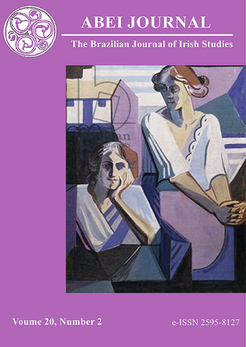 Pilar Villar Argáiz, “Ireland and the Popular Genre of Historical Romance: The Novels of Karen Robards”, ABEI: Brazilian Journal of Irish Studies, 20.2 (2018): 97-109. |
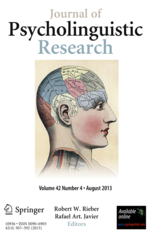 Cristóbal Lozano, “The Development of Anaphora Resolution at the Syntax-Discourse Interface: Pronominal Subjects in Greek Learners of Spanish”, Journal of Psycholinguistic Research, 47.2 (2018): 411-430. |
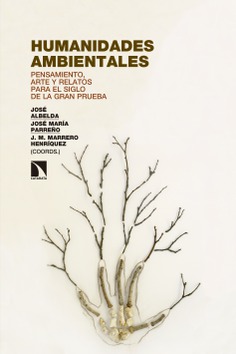 Margarita Carretero González, “Un nuevo plato en el menú de las humanidades ambientales: los estudios veganos”, in J. Albelda, J. M. Marrero Henríquez & J. M. Parreño (Eds.), Humanidades Ambientales: Pensamiento, Arte y Relatos para el Siglo de la Gran Prueba (La Catarata, 2018), pp. 218-232. |
 Karin Vilar Sánchez, “No he visto nada de lo que has puesto. Gesichtswahrung im Spanischen mittels semantischer Generalisierung”, in Daniel Reimann, Ferrán Robles u Sabater, Raúl Sánchez Prieto (Eds.), Kontrastive Pragmatik in Forschung und Vermittlung. Deutsch, Spanisch und Portugiesisch im Vergleich, I (Narr Francke Attempto Verlag, 2018), pp. 109-122. Karin Vilar Sánchez, “No he visto nada de lo que has puesto. Gesichtswahrung im Spanischen mittels semantischer Generalisierung”, in Daniel Reimann, Ferrán Robles u Sabater, Raúl Sánchez Prieto (Eds.), Kontrastive Pragmatik in Forschung und Vermittlung. Deutsch, Spanisch und Portugiesisch im Vergleich, I (Narr Francke Attempto Verlag, 2018), pp. 109-122. |
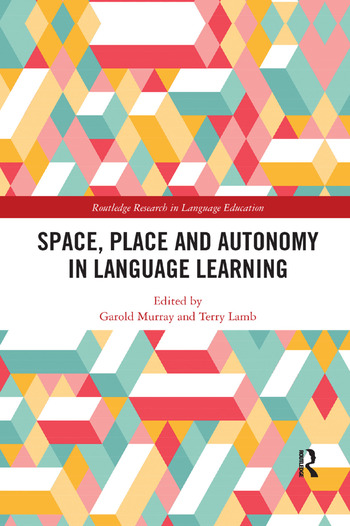 Manuel Jiménez Raya & Flávia Vieira, “Teacher Education for Autonomy: Case Pedagogy as an Empowering Interspace between Reality and Ideals”, in T. Lamb & G. Murray (Eds.), Space, Place and Autonomy in Language Learning (Routledge, 2018), pp. 97-112. Manuel Jiménez Raya & Flávia Vieira, “Teacher Education for Autonomy: Case Pedagogy as an Empowering Interspace between Reality and Ideals”, in T. Lamb & G. Murray (Eds.), Space, Place and Autonomy in Language Learning (Routledge, 2018), pp. 97-112. |
 Karin Vilar Sánchez, “„Deutsch? – Das schaff ich schon!“ Spracherwerbsmotivation unter den spanischen Emigranten der neuen Generation”, German as a Foreign Language, 2.2016 (2016): 44-66. Karin Vilar Sánchez, “„Deutsch? – Das schaff ich schon!“ Spracherwerbsmotivation unter den spanischen Emigranten der neuen Generation”, German as a Foreign Language, 2.2016 (2016): 44-66. |
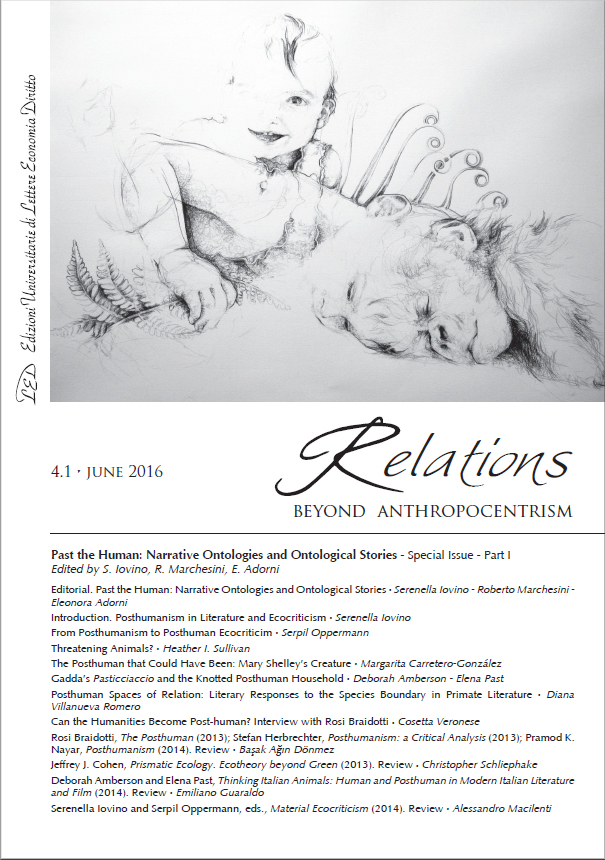 Margarita Carretero González, “The Posthuman that Could Have Been. Mary Shelley's Creature”, Relations. Beyond Anthropocentrism, 4.1 (2016): 53-64. Margarita Carretero González, “The Posthuman that Could Have Been. Mary Shelley's Creature”, Relations. Beyond Anthropocentrism, 4.1 (2016): 53-64. |
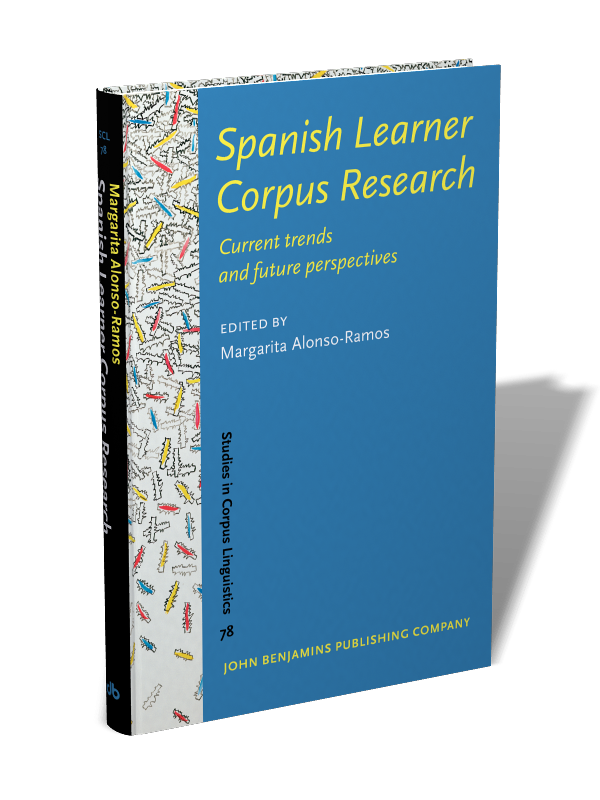 Cristóbal Lozano, “Pragmatic Principles in Anaphora Resolution at the Syntax-Discourse Interface: Advanced English Learners of Spanish in the CEDEL2 Corpus”, in M. Alonso Ramos (Ed.), Spanish Learner Corpus Research: Current Trends and Future Perspectives (John Benjamins, 2016), pp. 235-265. Cristóbal Lozano, “Pragmatic Principles in Anaphora Resolution at the Syntax-Discourse Interface: Advanced English Learners of Spanish in the CEDEL2 Corpus”, in M. Alonso Ramos (Ed.), Spanish Learner Corpus Research: Current Trends and Future Perspectives (John Benjamins, 2016), pp. 235-265. |
 Rocío G. Sumillera, “From Inspiration to Imagination: The Physiology of Poetry in Early Modernity”, Parergon, 33.3 (2016): 17-42. Rocío G. Sumillera, “From Inspiration to Imagination: The Physiology of Poetry in Early Modernity”, Parergon, 33.3 (2016): 17-42. |
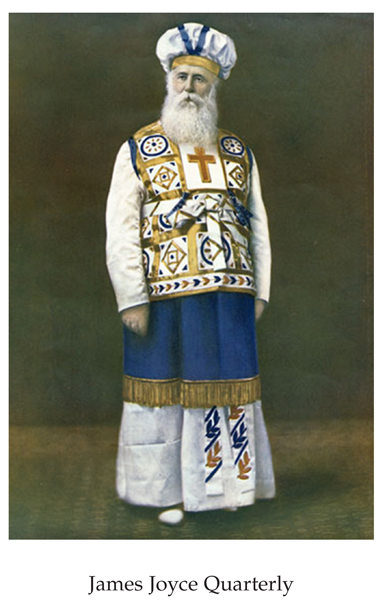 Pilar Villar Argáiz, “The ‘Unfettered Freedom' of 'Flitting Bats': The Inoperative Community in James Joyce's A Portrait of the Artist as a Young Man”, James Joyce Quarterly, 52.3-4 (2015): 531-556. Pilar Villar Argáiz, “The ‘Unfettered Freedom' of 'Flitting Bats': The Inoperative Community in James Joyce's A Portrait of the Artist as a Young Man”, James Joyce Quarterly, 52.3-4 (2015): 531-556. |
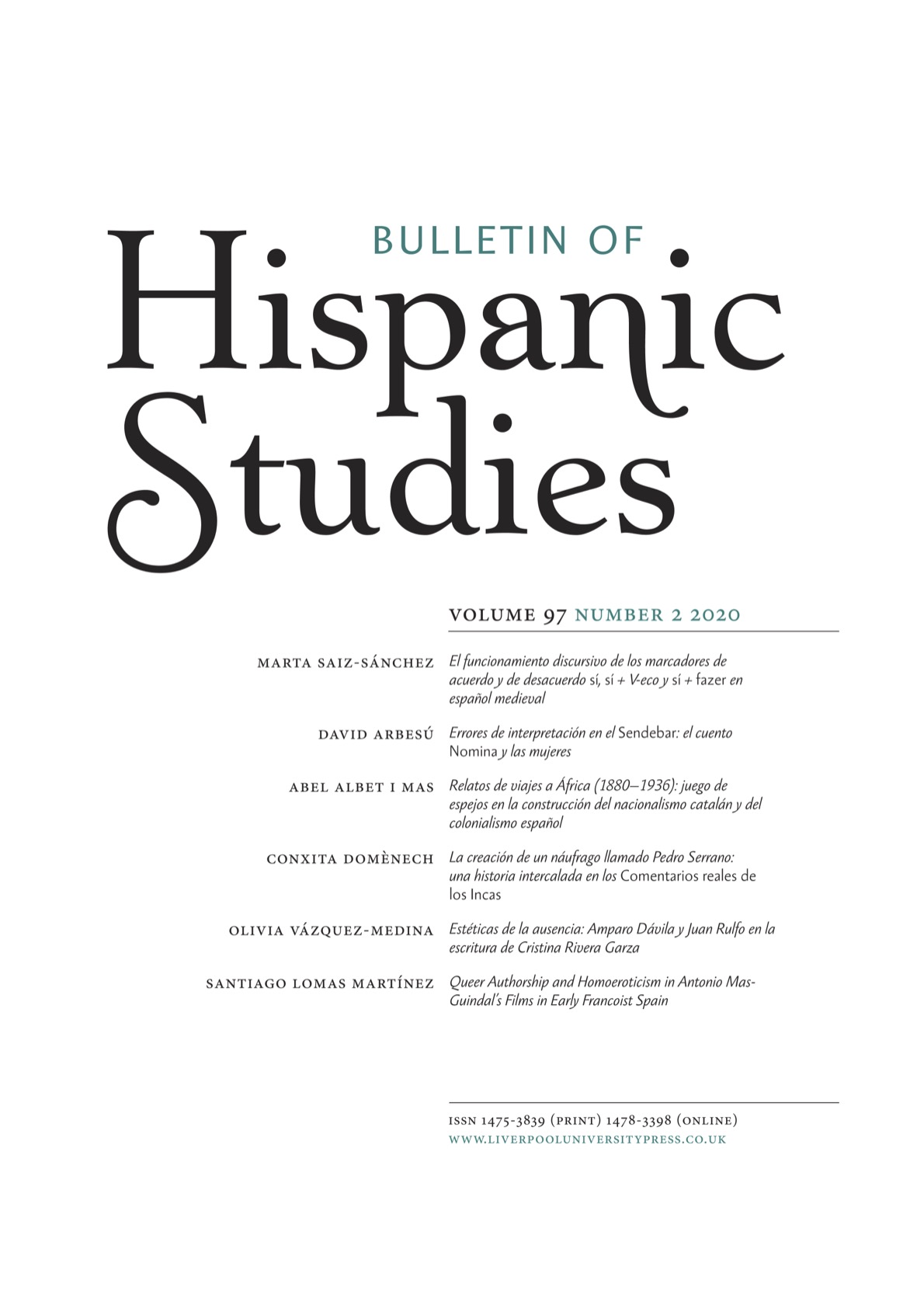 Rocío G. Sumillera, “Shakespeare's Hamlet in Twentieth-Century Spanish Poetry”, Bulletin of Hispanic Studies, 92.6 (2015): 645-665. Rocío G. Sumillera, “Shakespeare's Hamlet in Twentieth-Century Spanish Poetry”, Bulletin of Hispanic Studies, 92.6 (2015): 645-665. |
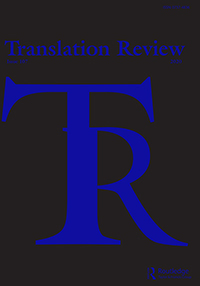 Paula Camacho, “Subtitling for International Film Festivals: An Interview with Dr Jorge Díaz-Cintas”, Translation Review, 92.1 (2015): 1-7. Paula Camacho, “Subtitling for International Film Festivals: An Interview with Dr Jorge Díaz-Cintas”, Translation Review, 92.1 (2015): 1-7. |
 Rocío G. Sumillera, “Language Manuals and the Book Trade in England”, in José María Pérez Fernández and Edward Wilson-Lee (Eds.), Translation and the Book Trade in Early Modern Europe (Cambridge University Press, 2014), pp. 61-80. |
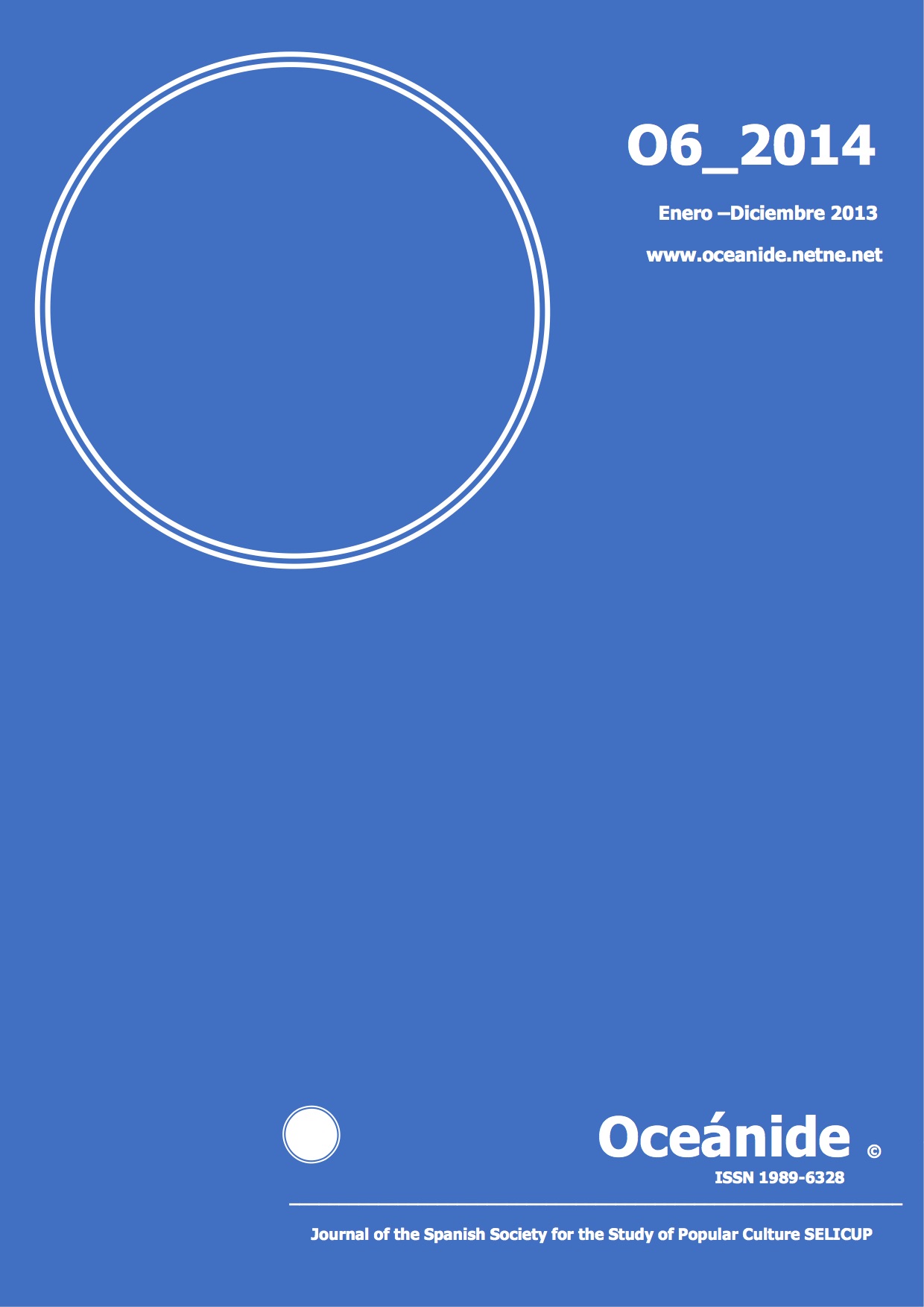 Paula Camacho, “Los subtítulos cinematográficos: un puente entre culturas”, Oceánide, 6.6 (2014): digital. Paula Camacho, “Los subtítulos cinematográficos: un puente entre culturas”, Oceánide, 6.6 (2014): digital. |
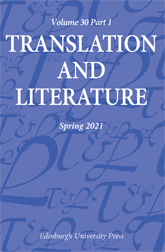 José María Pérez Fernández, “Andrés Laguna: Translation and the Early Modern Idea of Europe”, Translation and Literature, 21.3 (2012): 299-318. José María Pérez Fernández, “Andrés Laguna: Translation and the Early Modern Idea of Europe”, Translation and Literature, 21.3 (2012): 299-318. |
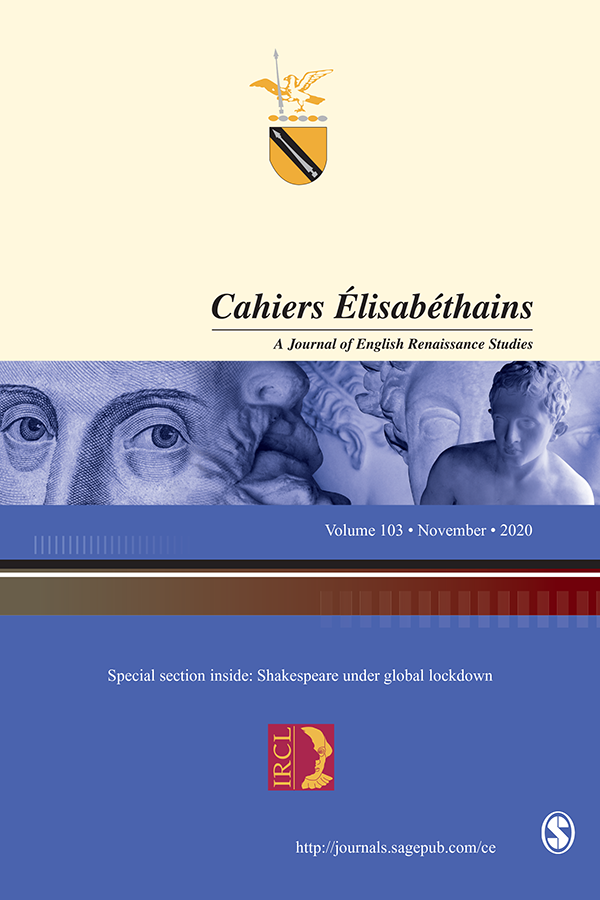 José María Pérez Fernández, “From Compulsion to Virtue: Epic, Translation, and the Significance of Early Modern Blank Verse”, Cahiers Élizabéthains, 75.1 (2009): 1-16. José María Pérez Fernández, “From Compulsion to Virtue: Epic, Translation, and the Significance of Early Modern Blank Verse”, Cahiers Élizabéthains, 75.1 (2009): 1-16. |
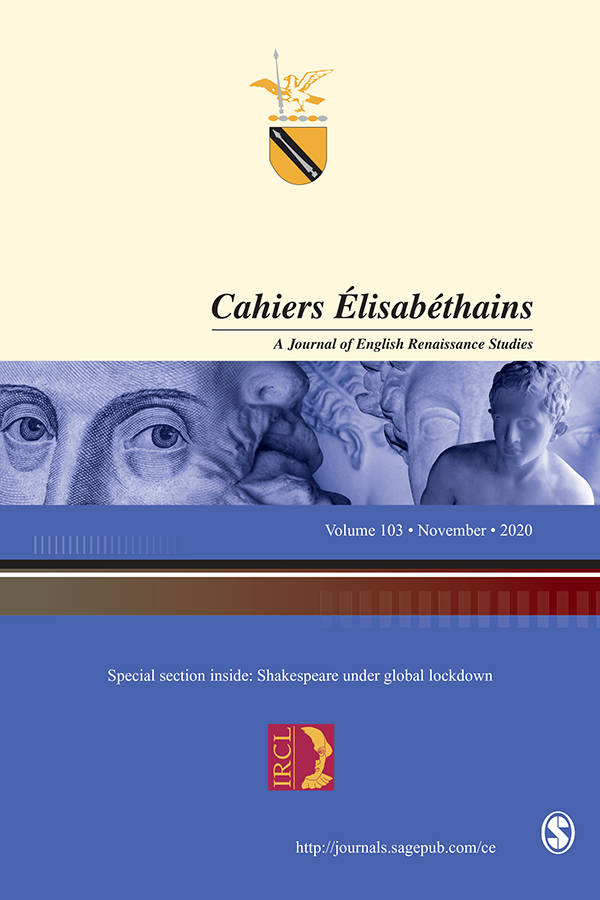 José María Pérez Fernández, “Translation and Metrical Experimentation in Sixteenth-Century English Poetry: The Case of Surrey’s Biblical Paraphrases”, Cahiers Élizabéthains, 71.1 (2007): 1-13. 2009 University of Granada Research Award (Premio Universidad de Granada a Trabajos de Investigación de Excelencia, edición de 2009). José María Pérez Fernández, “Translation and Metrical Experimentation in Sixteenth-Century English Poetry: The Case of Surrey’s Biblical Paraphrases”, Cahiers Élizabéthains, 71.1 (2007): 1-13. 2009 University of Granada Research Award (Premio Universidad de Granada a Trabajos de Investigación de Excelencia, edición de 2009). |
|
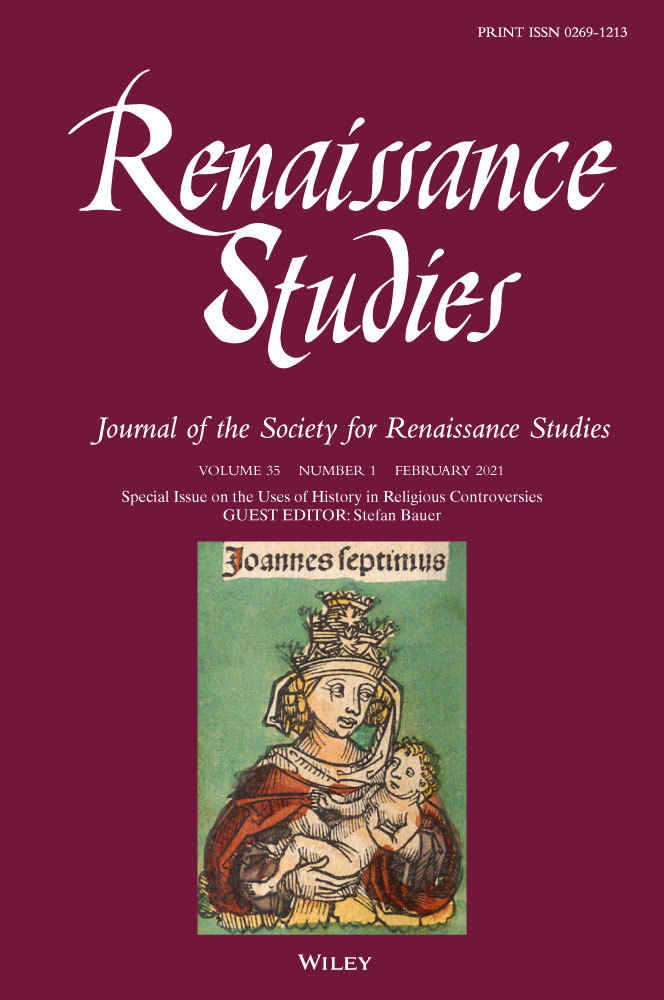 José María Pérez Fernández, “‘Wyatt Resteth Here’. Surrey’s Republican Elegy”, Renaissance Studies, 18.2 (2004): 208-238. 2005 University of Granada Research Award (Premio Universidad de Granada a Trabajos de Investigación de Excelencia, edición de 2005). |
|
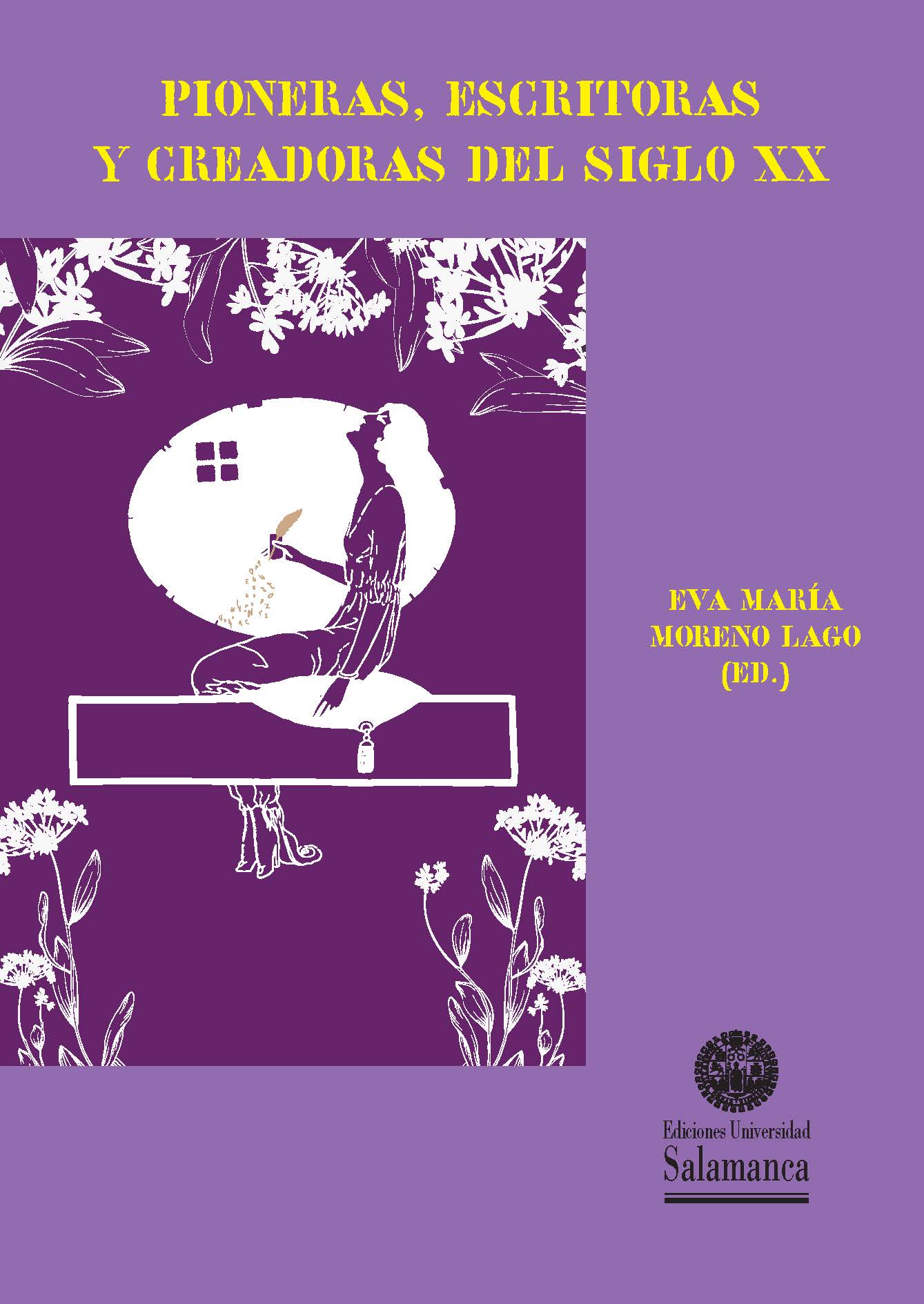
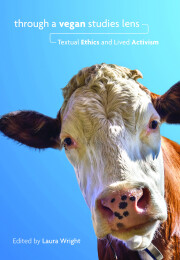 Margarita Carretero González, “
Margarita Carretero González, “